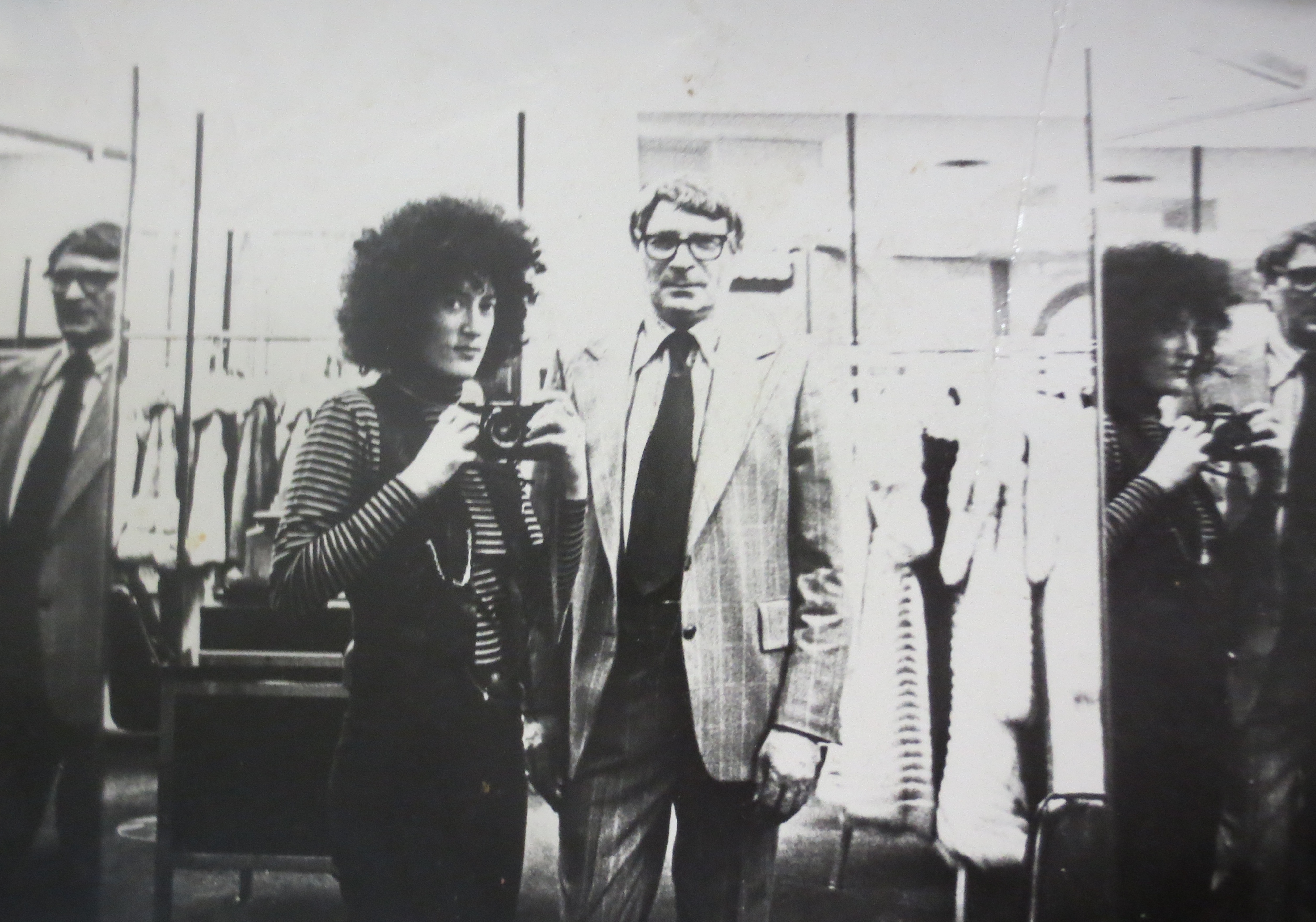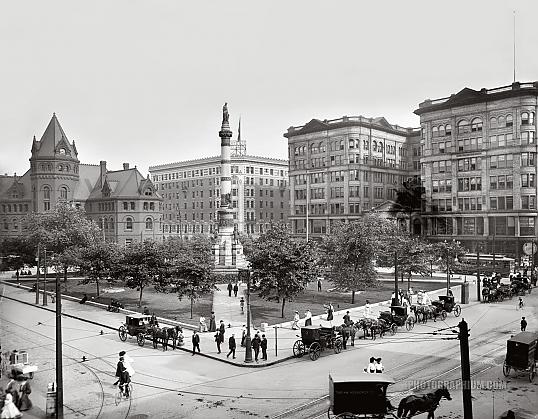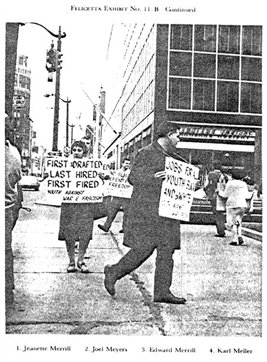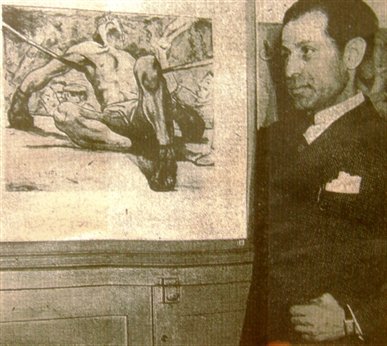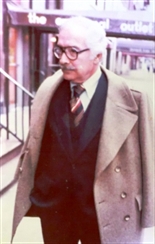The Fur Store
T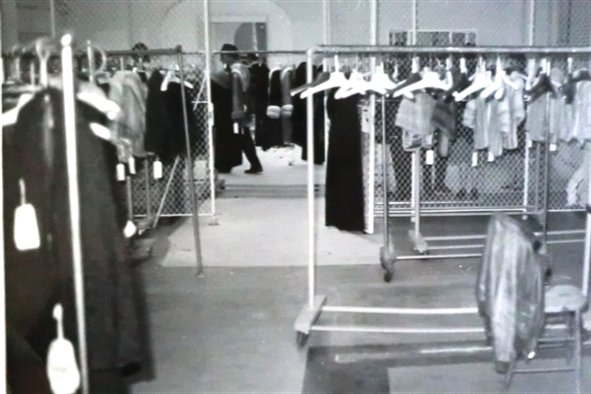
Showroom, Sidney Gross Furs
Just across from N.L. Kaplan’s in Lafayette Square and upstairs in the Lafayette Square Building, was my father’s fur store. Sidney, who often admitted to his “lack of ambition,” was nevertheless able to start up his own fur store and make a living at it for many years. It was his little refuge where he could put his feet up and read the New York Times and the Batavia Downs Racing Form, often at the same time. Since customers rarely walked in, he could remain there undisturbed for most of the day. Fur sales were not his mainstay but rather it was the summer’s fur storage business that provided the bulk of his income.
From time to time some of his unsavory associates would appear, like Nate Abelson. Nate was an older man who wore a trench coat and a hat pulled down over his eyes. I suspected that he peddled various hot items, perhaps stolen furs or whatever. I am not very sure what my father’s dealings were with this character but I assumed he was my father’s bookie, and he would make some bets for him on the ponies now and then. On other occasions he might show up with “goods” of questionable origin. Nate had the habit of operating his enterprise out of the trunk of his car.
Diane and Sidney in fur shop
Sidney also employed “Virginia,” his Polish seamstress. She would alter fur coats when such alterations were required. Behind her back, Sidney would rail against the “dumb Pollocks” as he would slur other minorities whenever the occasion might arise. Blacks were “schvartzas” and Italians were “italyeners” (usually shorted to ‘talyeners’).
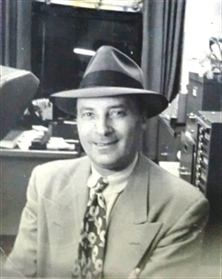
Sidney at work Lafayette Square
Sidney had worked with Max Pearlman, one of the floor salesmen, at N.L. Kaplan’s. At one point, Max had joined with Sidney’s business as a full partner. If I remember correctly, this went on for a few years before there was a falling out and the partnership dissolved. For the remaining years he was in business, it was exclusively “Sidney Gross Furs.”
It is somewhat ironic that during my anti-war years, the site of most of our demonstrations was Lafayette Square, just a stone’s throw from my father’s business. This was because of the strange mish mosh of crisscrossing streets in downtown Buffalo at that time. The only place where one could be visible from many directions of approaching traffic was right there. I would demonstrate there with “Youth against War and Fascism (YAWF)”, “Students for a Democratic society (SDS)”, the “Martin Sostre Defense Committee”, and other groups.
But getting back to Max Pearlman. I am not exactly certain when this happened but as my father told it, one day Max came home early from work and found his wife in bed with Tony (Anthony) Sisti, a well-known painter in Buffalo. This discovery eventually led to a divorce. Max, who loved classical music and who had an enormous collection of operatic records, had his marriage tornapart by a “Latin lover.”
Tony Sisti, WPA era artist and boxer
Tony Sisti was a legendary figure in Buffalo. A prize fighter from New York, he had taken some of his purse money and financed his study of painting in Florence, Italy. Afterwards he hunted big game with Hemmingway in Africa only to return States side to settle in Buffalo where he opened an art gallery and frame shop.
He also gave private oil painting lessons. When The Buffalo Art Institute (called the “Albright Art School” towards the end of its existence) ended and I no longer had access to art lessons, my mother had taken me to see his gallery and meet the maestro. I ended up taking private painting lessons with Tony until my father found out about it. He had made me feel very guilty paying $7 per lesson (a lot of money in those days) and, in temper tantrum, made me stop the lessons. But perhaps there was a lot more than just that going on. How did my mother know about Tony? Did Tony have a thing for Jewish women?
All I know is that when Sidney was living in Ya-Po-Ah Terrace (a senior citizen high rise) in Eugene, he told me that he was not my biological father. He claimed that after he had found out he was deceived by Jeanette’s family regarding her mental illness, that he never had sexual relations with her again. If true this would mean that only Ronnie was his son and that both Diane and I were of questionable parentage. And then who was the real father? He claimed not to have a clue.
He had already told me about the attempted abortion but this was new information. I had always assumed the abortion was just because of his fear of his passing on the dreaded gene for mental illness. Now it was more, and he had no idea who the real father was. Kabang!
I once had a letter that could have possibly shed some light on this whole shoddy affair. It was written in Hebrew from my grandfather to Sidney who had probably written asking for fatherly advice. Unfortunately I gave the letter to the now late Rabbi Kinberg of Eugene for translation but he lost it, or so he claimed. I am guessing he did not want to reveal the contents to me.
I couldn’t help but speculate on who might be my actual father. Was it Tony Sisti? If so, OK, I am half Italian and that explains my desire for an oil painting box at the age if seven. Magari! Had he slept with my mother? I should have kept a lock of Sidney’s hair or something so a DNA test could determine these things. Perhaps I still could do one comparing my DNA with that of Ronnie. Whatever the truth, since Sidney obviously brought me up, I now feel that the question is somewhat moot. But I did have an opportunity that I completely missed to get that lock of hair.
When Sidney died suddenly one night at Ya-Po-Ah Terrace, it triggered a whole series of events. Sidney had meticulously planned for his own demise by purchasing a burial plan that included cremation and burial at sea. His orthodox bother Herb Ross, however, objected to this on the grounds that orthodox Jews cannot be cremated but must be buried in a traditional manner. A compromise was finally reached where my father’s intent could be honored while keeping to the orthodox requirement of immediate burial and the reciting of certain ritualistic prayers.
First of all a learned Jew had to be found to recite the mourner’s Kaddish over the body. I had a Jewish friend who I knew from my computer work and he was willing to do this. I needed to call the hospital and, when the body bag was being transported to Woodburn, the location of the crematorium, I need for the hearse to stop at the Lane County Public Service Building, where I worked in downtown Eugene. Well all of this transpired and my friend and I were sitting in the front of the hearse saying the prayer while placing a hand on the body bag. I could have unzipped the bag for a last look or to steal a lock of hair. But I really couldn’t do either.
Another of Uncle Herb’s requirements was to say the Kiddush again (and some other supplemental prayers) just before the cremation. Sidney had a Jewish friend by the name of Adolph (how is it possible that he could be Jewish with such a name?). Anyway Adolph and I drove all the way to Woodburn to intercept the hearse and the body to say the prayers. This I did and then we waited around for the ashes. Normally the ashes would have been kept there to cool off and then loaded onto a boat with other deceased persons’ ashes for disposal twice a year at sea.
Uncle Herb Ross, editor and liquor salesman
However in this case, we took immediate possession of the ashes and placed the cardboard container on the back seat of my car. I swear that as it was getting darker on the ride back to Eugene it seemed like the container was glowing in the dark. When we arrived in Eugene and I dropped off Adolph at Ya-Po-Ah, I had to drive home, pick up my wife Angela, and then take off to the Oregon coast for a quick scattering of ashes at Sea.
My mother was a “screamer” when mentally ill and had to be confined to a nursing home near Eugene. She had a gull bladder disorder and suffered a stroke. She died in Sacred Heart Hospital in Eugene while under the care of a local, Jewish doctor. It was my first experience with a doctor’s “quality of life” argument which basically talks the family into “non-invasive” measures so that the patient can pass away without prolonging their life in a vegetative state.
Jeanette had a nice, Jewish funeral with me bawling away in an attempt to read an eulogy I had written. Artist friends like Jim Ulrich showed up to give me moral support. Somehow the death of one’s mother hits harder, at least in my case, and I did not feel myself for several months afterwards.
